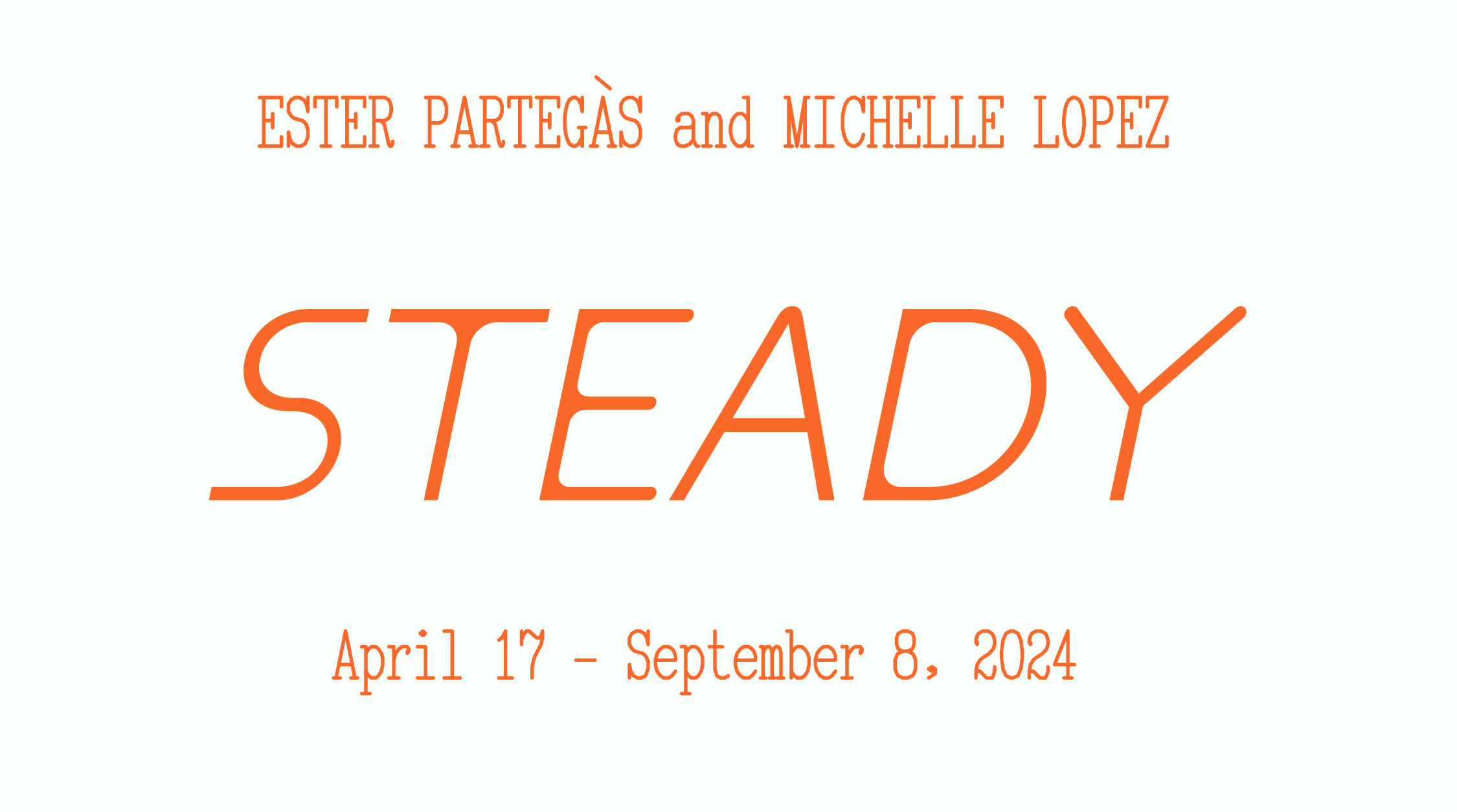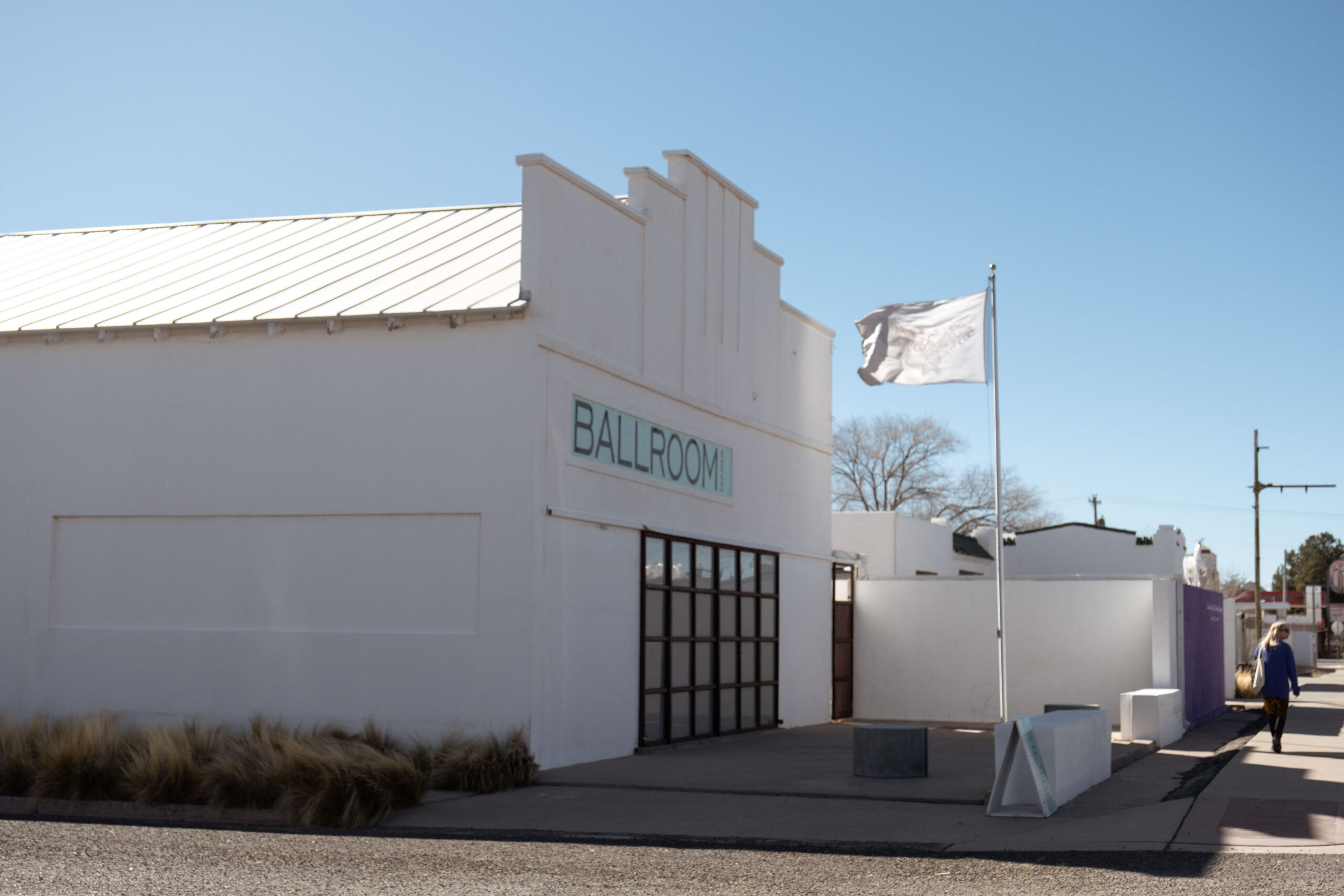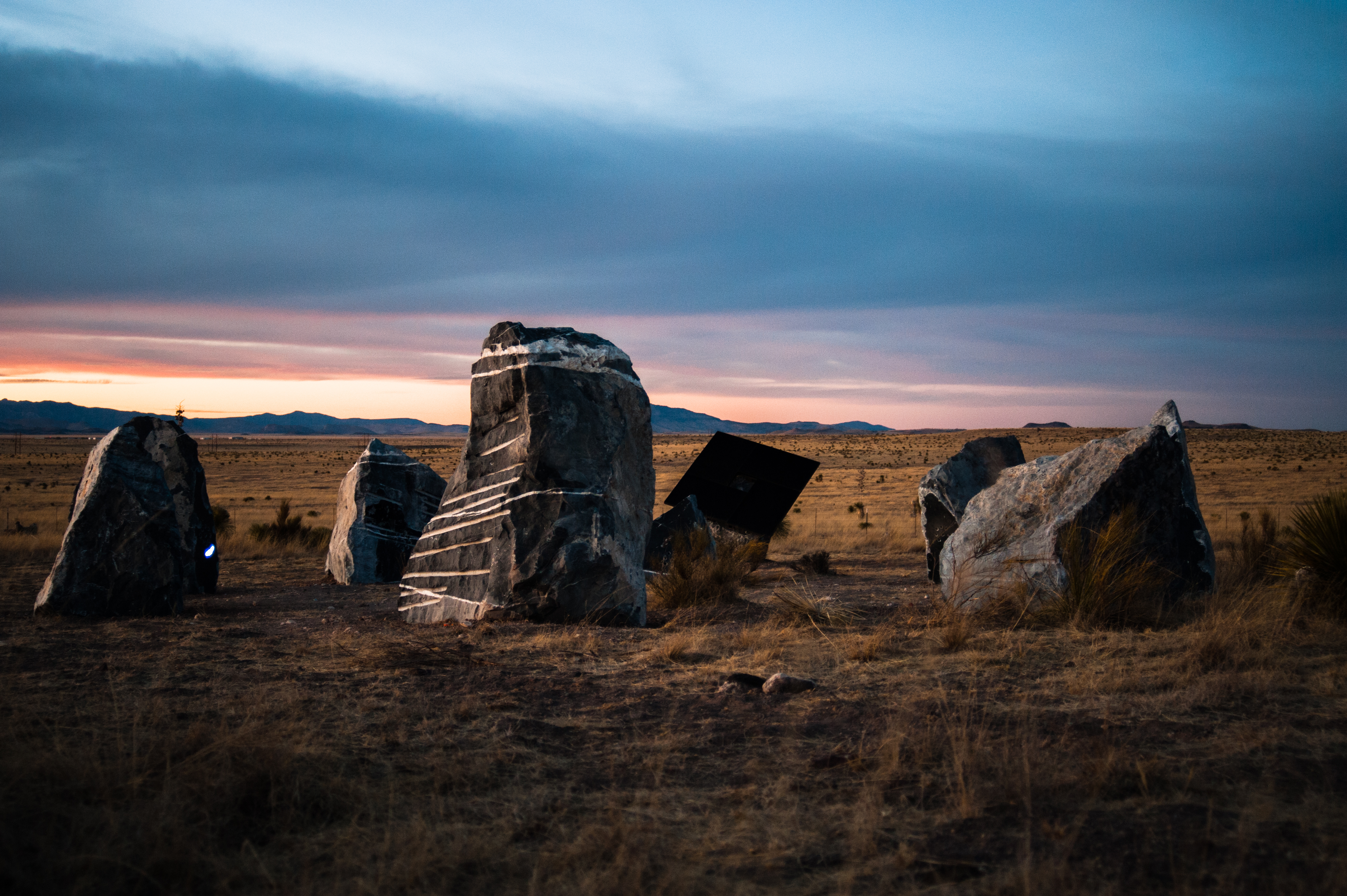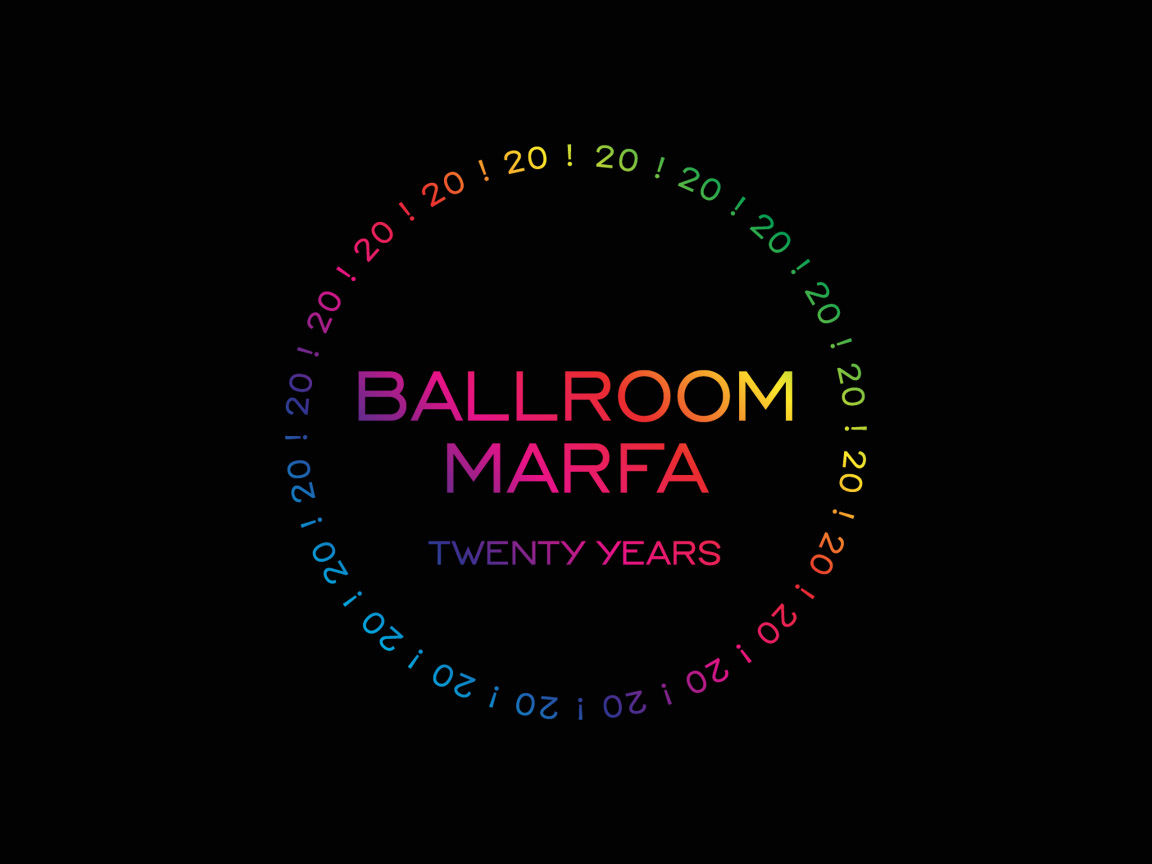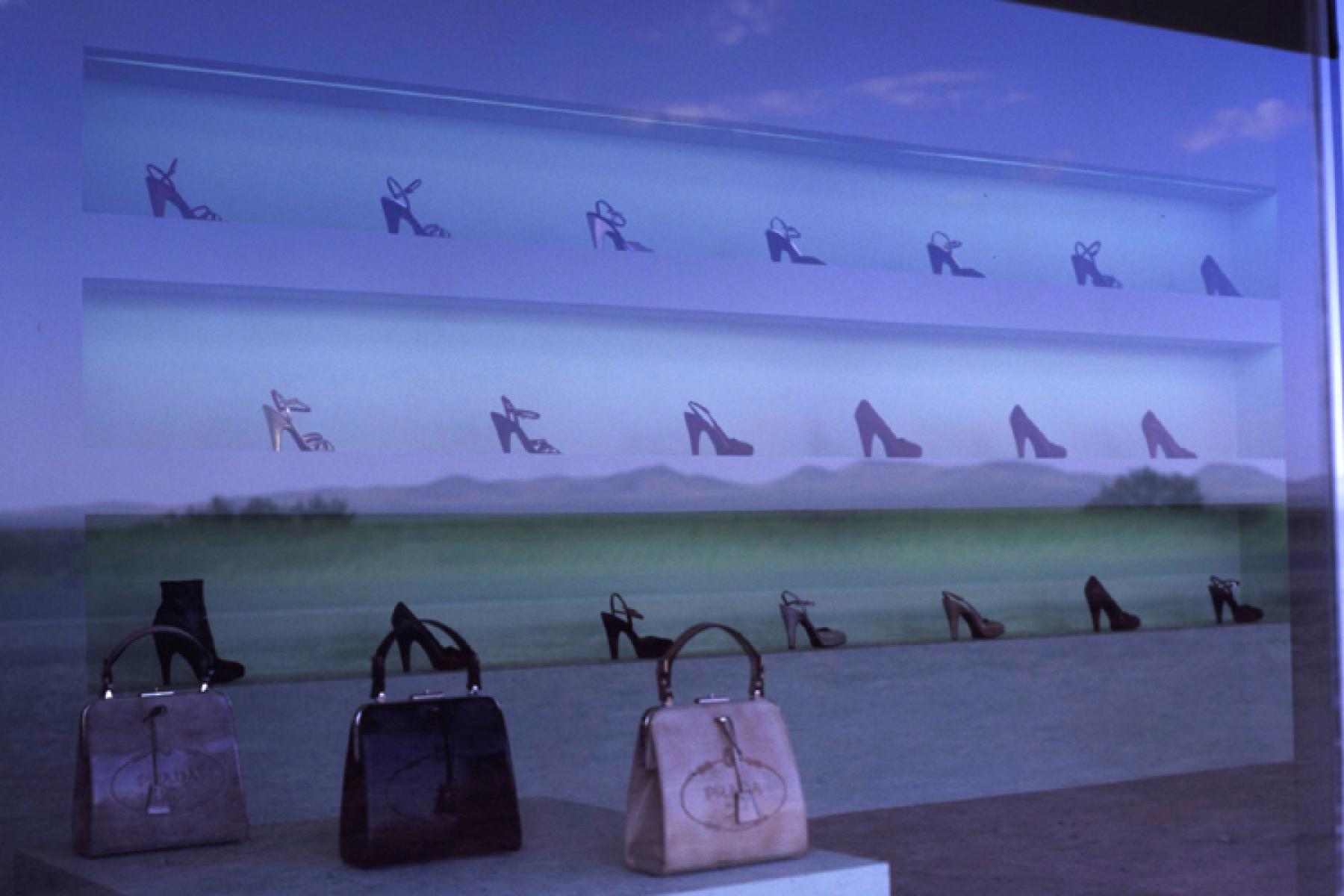History
Working together since 1995, Elmgreen and Dragset’s practice draws from various disciplines, often including institutional critique, social politics, performance and architecture in the content of their work. In 2001 the artists created an intervention/installation at the Tanya Bonakdar Gallery in New York City, Opening Soon, Powerless Structures, Fig. 242. In this work, the artists covered up the front windows of the gallery and installed a large sign that announced Prada would be opening a new store at the location. Opening Soon, Powerless Structures, Fig. 242 was a playful commentary on how art galleries have contributed to the process of gentrification in urban areas. Their spoof caught the attention of Yvonne Force Villarreal and Doreen Remen, founders of Art Production Fund, who eventually teamed up with the artists to realize Prada Marfa.
Elmgreen and Dragset introduced a simple and captivating proposal to Force and Remen, “to place a life size model of a Prada boutique, permanently, in the middle of the Nevada desert.” The piece was originally meant to be called Prada Nevada. In the same spirit of the duo’s other installations, they would recreate and displace common signifiers causing an antinomical experience for viewers. After Nevada had been dismissed as a location for the sculpture, APF reached out to Fairfax Dorn and Virginia Lebermann, founders of Ballroom, to work together to realize Prada Marfa in West Texas.
Prada Marfa is a hyper-realistic reconstruction of a Prada boutique, located off the south side of highway 90 outside of Valentine, Texas in the vast Chihuahuan Desert. The sculpture itself is an adobe brick building covered in white stucco. The door is sealed shut and denies visitors entrance as well as any opportunity for commercial exchange. In its entirety, both interior and exterior, Prada Marfa is a minimalist sculpture. It is composed of simple rectilinear shapes. The horizontal lines that make up the front façade and the interior of the sculpture accentuate and are parallel to the broad and expansive horizontal bands of the West Texas horizon.
Inside three recessed shelves run lengthwise, parallel to the glass panels, evoking the minimalist works of Donald Judd. The shelves house twenty shoes; all high heeled and all for one’s right foot. Inside, Prada handbags rest on two small pedestals. At night when the interior of the sculpture is illuminated, the brightly lit pistachio green interior radiates out onto the dark stretch of Texas highway evoking the region’s rich extra-terrestrial folklore or the work of Dan Flavin at the nearby Chinati Foundation.
Ballroom and APF began construction of Prada Marfa in early 2005 and opened the sculpture that fall. Boyd Elder was elected the site representative and oversaw the project until he sadly left us in 2018. He was a lifelong resident of Valentine and a Big Bend legend, his name coming up alongside Mick Jagger, Joe Walsh, and Joni Mitchel. Boyd was an artist himself and was responsible for several of the album covers for The Eagles. Read this Texas Monthly article about the West Texas icon.
The misconception of Prada Marfa being mistaken for an actual functioning Prada boutique stems from Miuccia Prada’s own contributions to the sculpture. When Elmgreen and Dragset used the Prada logo in Opening Soon, Powerless Structures, Fig. 242 at the Tanya Bonakdar gallery, the duo did not ask permission because of the short duration of the installation.
Because Prada Marfa was to last longer, Elmgreen and Dragset reached out to the brand to seek permission. Not only did they agree, Miuccia Prada herself curated the merchandise in the sculpture, from the AW05 collection, to match the sandy, earthy color tones of the surrounding environment. The company also provided information about corporate design; from paint colors to carpet.
Even though Prada contributed to the sculpture’s construction, Elmgreen and Dragset, Ballroom and APF maintain that the work is not an advertisement or promotion of the brand. Making this distinction between art and advertising, Elmgreen contends that “It was a different situation than being commissioned by Prada to do something because then it would’ve been a promotional event, for us it was something we came up with because we thought, how would these shops for luxury goods actually look if they were taken out of their normal context.”
Everyone involved with the project had to defend the integrity of Prada Marfa as art in 2013 when the Texas Department of Transportation (TX DoT) declared the sculpture an illegal roadside advertisement. The dispute came with the construction of another roadside installation on the same stretch of highway 90, and commissioned by Playboy Enterprises. The installation consisted of the trademark Playboy bunny logo on top of a tall pole, towering forty feet above a black spray-painted 1972 Dodge Charger on a concrete platform that aped Donald Judd’s 15 untitled works in concrete at his neighboring Chinati Foundation. The work was designed by the artist Richard Phillips and was commissioned as part of an attempt to revive the brand for a younger generation.
The installation was soon declared an illegal outdoor advertising sign after a local resident and artist filed a complaint about the forty-foot tall neon bunny. Members of the community were not only upset that the sculpture promoted pornography, but also the blatant appropriation of Judd’s works in concrete at the Chinati Foundation.
Playboy was given forty-five days to remove the piece on the grounds that they did not have a license to display outdoor advertisement. Playboy took the case to court which brought Prada Marfa into the controversial spotlight. After eight years of existence, TX DoT declared that the sculpture was also an illegal roadside advertisement and stated that Ballroom did not have the required permits and licenses for the sculpture to exist in its location.
After a year of negotiations, Prada Marfa was finally allowed to stay. In order for the sculpture to remain, Prada Marfa was given museum status, with the building as their single art exhibit. Ballroom also acquired new lease agreements for the property on which the sculpture stands. Now the signage on the building is considered to be an ‘on-premise’ sign under state rules and does not require a state permit under the Highway Beautification Act.
Prada Marfa was constructed from adobe so that it would naturally decay over time but the artists’ ephemeral intention was quickly reconsidered. On January 12, 2005, just two days after the work’s formal opening reception, the sculpture was vandalized and burglarized. The sculpture was spray-painted, shot with a gun, the door was pulled off with a truck and a chain, and the merchandise was stolen.
Ballroom, APF, and the artists made a decision to repair the sculpture. Restoration of the sculpture was justified because the vandalism was deemed premature and because so few people had seen the work in its original state. Prada donated six identical new bags and the right-foot shoes were taken out of their boxes to be displayed in place of the former left foot shoes. To further deter future theft, holes have been cut into the bottom of the Prada handbags.
Another major act of vandalism was carried out on Prada Marfa in March of 2014, this time by an artist and carried out as a work of art itself. Read this Texas Monthly article for more information about the 2014 incident.
Due to subsequent acts of vandalism, additional and ongoing repair and renovation has been carried out on Prada Marfa. The reality of leaving Prada Marfa completely untouched is a complicated and multifaceted issue. The site is far from pristine, as visitors will already know; however, all parties realized that if the structure were allowed to fully decay, it would become both a hazard and an eyesore. With the blessing of Elmgreen & Dragset, the work’s original plan was modified shortly after it was constructed in 2005.
Since it is a public installation, APF and Ballroom are required by law to perform a certain level of repairs in the interest of safety. Performing this minimal maintenance remains true to the spirit of Elmgreen & Dragset’s original proposal, and it also allows us to keep the installation accessible to the public.
In addition to our efforts to maintain the site, we organize quarterly cleanups of the two mile-long stretch of US Highway 90 adjacent to Prada Marfa as part of the Texas Department of Transportation’s Adopt-a-Highway program. As we saw in the aftermath of the 2014 site defacement, residents of Valentine also voluntarily removed detritus left behind by visitors in an effort to protect the site.
